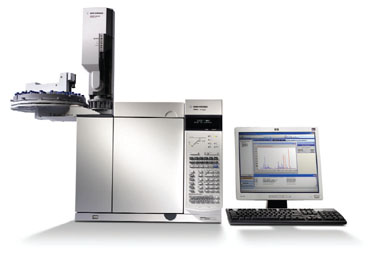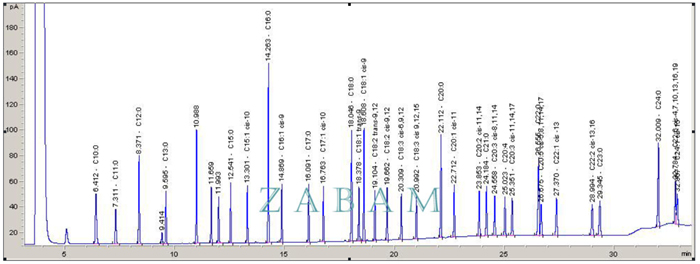The Interdepartmental Equipment Facility

Gas Chromatograph
A Gas Chromatograph (GC) is used to separate complex mixtures of organic compounds, identify the individual components and determine their concentrations. It is especially useful for volatile compounds but also for compounds that can be made volatile by raising the temperature, as long as they don't break down first.
The Agilent 7890A GC is equipped with an autosampler, a split / splitless injector and three detectors: FID and ECD and TCD. The GC is equipped with electronic control of gas pressures and flows.

Separation of analytes by GC is achieved by injecting the multi-component sample into the route of the carrier gas or 'mobile phase' flowing through a GC column. The GC column is usually a quartz capillary tube, 5m to 200m in length, with an internal diameter of 0.05 to 0.5 mm. The mobile phase, which is a gas such as helium or hydrogen, flows across the 'stationary phase', which is a chemical coating on the inside of the capillary column.
The sample molecules swept into the column with the carrier gas interact with the groups on the inside coating of the column. Compounds with lower affinity for the stationary phase groups elute from the column quite early, while those that spend more time on interactions with the coating groups, exit the column late. The mixture is separated in this way into its components, with the 'Retention Times' for each analyte depending on its chemical properties.
Different columns might be used for different classes of compounds. The major differences are in the chemical nature of the stationary phase. Polysiloxanes are the most common stationary phases, and they might contain different substituent groups to modify the polarity of the phase. The nonpolar end of the spectrum is polydimethyl siloxane, and it can be made more polar by increasing the percentage of phenyl groups on the polymer. For very polar analytes, polyethylene glycols such as carbowax are commonly used.
The separation efficiency can be further attenuated by programming the temperature of the run column, which is held in an oven for that purpose. As the temperature gradually increases during the run, compounds with lower boiling points start to come out of the column sooner than those with higher boiling points.
Coming out of the column, one at a time, the separated compounds are led into some kind of detector. A typical detector, such as the Flame Ionization Detector, generates an electronic signal for every detected compound. A computer records the intensity of the signal, which serves as a measure for the concentration of each compound, and the retention time for that compound. It generates a 'chromatogram' which is a plot of the signal intensity vs. time. Each peak in the chromatogram represents a separate compound eluting from the GC
Fatty Acid Analysis. Separation of fatty acids by GC is one of the applications routinely run on our Agilent 7890A. A typical chromatogram is presented below.
